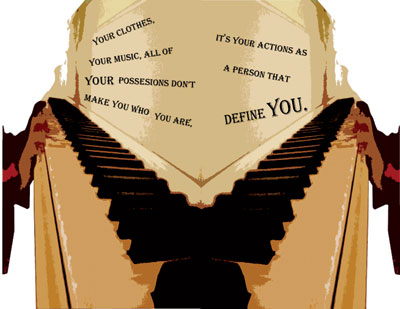All Nonfiction
- Bullying
- Books
- Academic
- Author Interviews
- Celebrity interviews
- College Articles
- College Essays
- Educator of the Year
- Heroes
- Interviews
- Memoir
- Personal Experience
- Sports
- Travel & Culture
All Opinions
- Bullying
- Current Events / Politics
- Discrimination
- Drugs / Alcohol / Smoking
- Entertainment / Celebrities
- Environment
- Love / Relationships
- Movies / Music / TV
- Pop Culture / Trends
- School / College
- Social Issues / Civics
- Spirituality / Religion
- Sports / Hobbies
All Hot Topics
- Bullying
- Community Service
- Environment
- Health
- Letters to the Editor
- Pride & Prejudice
- What Matters
- Back
Summer Guide
- Program Links
- Program Reviews
- Back
College Guide
- College Links
- College Reviews
- College Essays
- College Articles
- Back
140 Characters of Spite
A picture may be worth 1000 words, but 140 characters can say so much more. With the decreasing popularity of Facebook, Twitter use has increased exponentially. The augmentation of Twitter users has led to extremely rapid communication, a glorified version of “the grape vine.” With the ability to retweet and view trending topics, a tweet or hashtag has the potential to become global within hours. Although “going viral” is a veteran term to the Internet, Twitter has taken the bandwagon effect to a new level. Pick a stance because according to the 100 million active users on Twitter, there’s only one side to every story.
Twitter differs from Facebook in that constant updates of one’s random thoughts and menial activities are accepted, even encouraged. Before Twitter became a mainstream social networking site, harmless quips about someone’s appearance or personality went largely unnoticed. Now, however, Twitter has morphed into a place where trashing someone is okay, where tact is the farthest thing from anyone’s mind. These underhanded comments and vaguely specific remarks are most commonly known as a subtweet. Subtweets range from slight allusions to a person or event, to specifying every detail but a name. Although some are published innocently, others are tweeted with the intention of hurting someone without confrontation. We usually tweet on impulse, never considering that a tweet about someone’s hair or clothing will get back to them. Those in high school are generally perceived as judgmental, a fact further affirmed by our actions on Twitter. Claiming someone’s opinion irrelevant, publicly hating someone you barely know— it’s hardly acceptable in everyday life, yet easily found on Twitter.
Another aspect of the Twitterverse, is the apparent “mob mentality.” Whenever a widespread problem arises, everyone feels the need to voice their opinion, either in relation to the topic or to those commenting on it. Weighing in on an issue is a good thing; however, when that issue is a person, tweeting about someone we barely know changes from current event to cyberbullying. A fine line exists between telling someone they’re wrong, and hashtagging “#blankisanidiot.”
We may be inherently judgmental, but we are not inherently malicious. Twitter may have its share of playground bullies, but it isn’t all hostile territory. The only advice regarding this topic? Save your gossip for the lunch table, and think before you tweet.

Similar Articles
JOIN THE DISCUSSION
This article has 0 comments.
